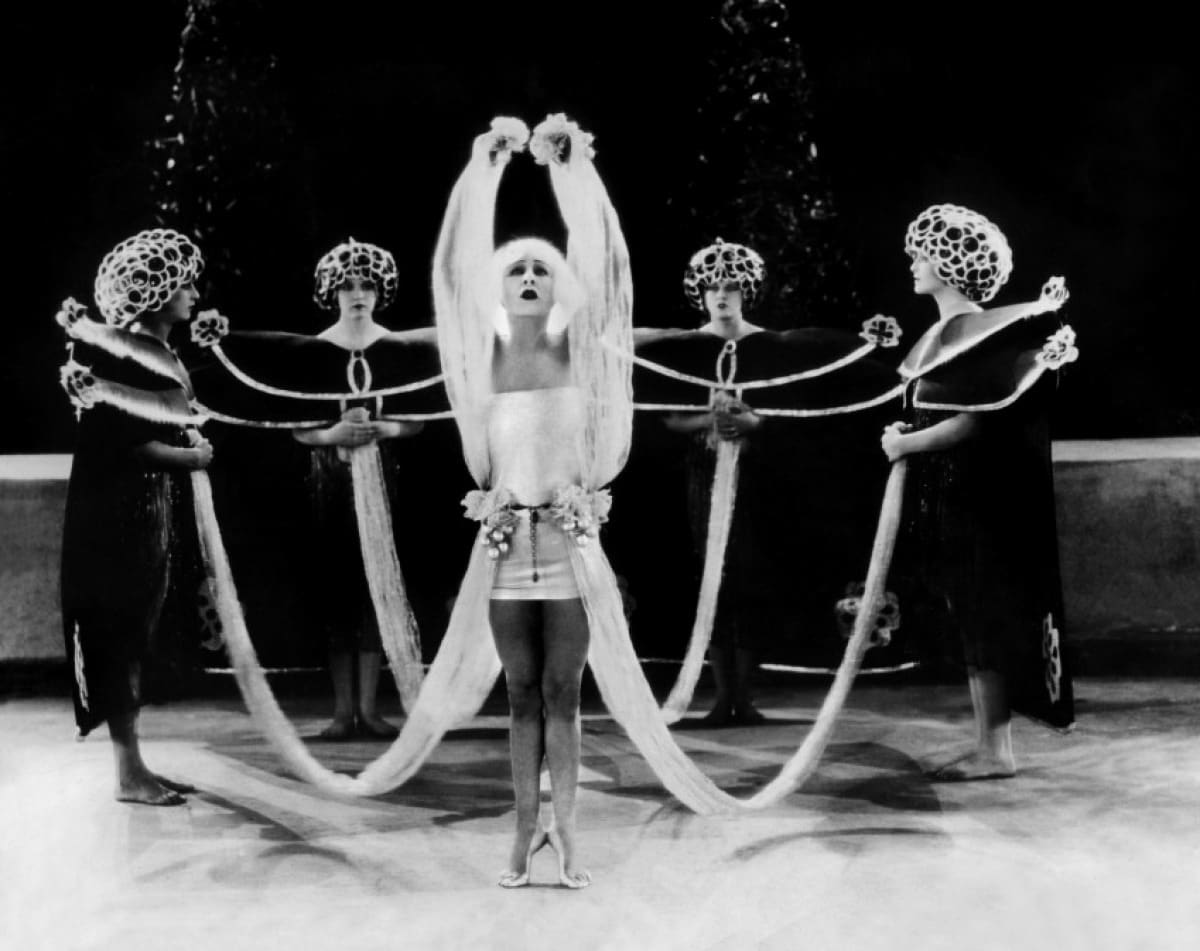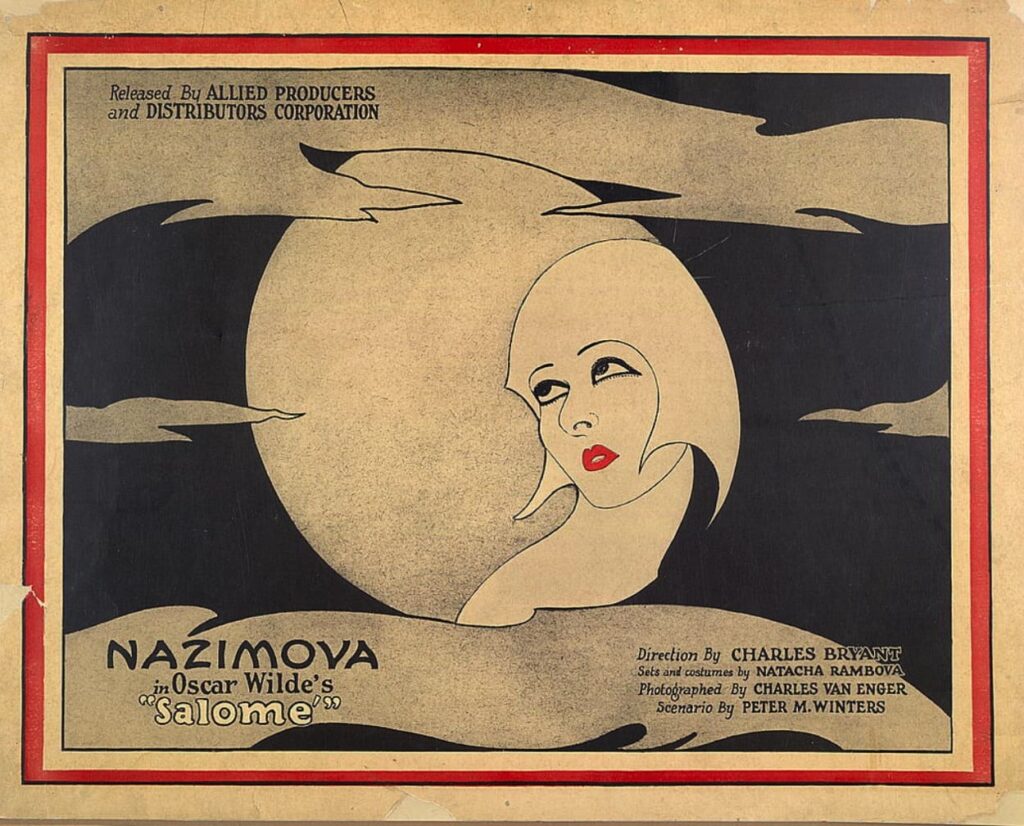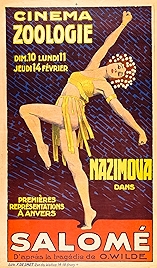Salomé, a notorious enterprise for the Russian-born, now-forgotten Hollywood great Alla Nazimova, its star, co-writer, co-director and producer, is the film that ruined her financially and brought an end to her time as a Hollywood player. It needs to be bad to justify the damage it caused to such a glittering career. It is.
The original story is from the Bible, as retold by Oscar Wilde, then retold again by adapter Nazimova and co-writer Natacha Rambova (Rudolph Valentino’s wife and possibly Nazimova’s lover). But in spite of the reworkings it’s still the story we all know, of the young and beautiful Salomé demanding that Herod bring her the head of John the Baptist.
Biblically, it was another example of a man brought low by a woman – see Adam, David, Samson, Solomon – but the Wilde/Nazimova/Rambova retelling puts a different spin on things. Herod, tongue lolling, eyes on stalks, fixated on the lithe Salomé, will do anything for her if only she’ll come across – a drink from your cup, a bite of your fruit, he implores, where “cup” and “fruit” clearly refer to something else entirely. She resists.
He’s also a pious, god-fearing man who for some reason has John the Baptist (or Jokanaan, as he’s called here) in his dungeon. I will grant your every desire if only you will dance for me, he beseeches. She, eventually tiring of the attention perhaps, decides to ask for the one thing she knows Herod cannot deliver, to point out how foolish he has become. Except he does deliver. And she dances. Then, sickened that he has cut off the head of a holy man, Herod shifts the blame to Salomé and has her put to death. In the process Salomé is claimed for feminism.
The film’s look is inspired by Aubrey Beardsley’s designs for the original publication of Oscar Wilde’s poem, written in French because Wilde was in exile in France at the time. As a further homage to Wilde, everyone in the film is queer or bisexual, or so the story goes. Some of the guards do definitely look like they’re at the fey end of the gay stereotype, others less so. On top of that, some of the female characters are men in drag. It’s all very fin de siècle and illustrates the decadence of Herod’s lifestyle rather than the decadence of Salomé’s.
The backgrounds and costumes look fantastic, as do Salomé’s various hair styles – a Gorgon-inspired one early on, a shock of bobbed peroxide later – but Nazimova and her co-director and husband Charles Bryant make a fatal mistake by trying to transfer a European stage sensibility to the screen.
Here’s high culture, you peasants, it seems to say as, in pearls-before-swine fashion, one excruciatingly static scene after another plays out on what looks almost like a bare stage. Hardly anyone moves; the camera is largely fixed; the over-acting is of Wagnerian proportions, particularly in the scenes Salomé and Jokanaan have together. These turn into what look like a series of staring competitions between Nazimova and slender, be-loinclothed Nigel De Brulier. You might snigger.
At least in her early 40s (her birthdate is suspect), Nazimova is a bit old to be playing a teenager but she’s lithe enough to get away with it as long as the camera stays back. Up close we can see that she’s doubly wrong for the role, lacking youth’s plumpness of flesh and also having a face that is cynically hard. Nazimova’s Salomé is a creature of guile rather than what she should be, one of innocence.
She comes across as a stroppy teenager, which might be truer to the original Salomé than anyone involved reckoned but doesn’t do this adaptation any favours.
The film premiered on New Year’s Eve 1922 and opened properly in February 1923. The reviews were respectful shading to poor. The box office was dismal. The years have been kind and it’s gathered cachet in some quarters. But for all its good looks, the enterprise is misbegotten from top to bottom. Though at the end, as Salomé dies for her art on Herod’s orders, there is at least some poetic symmetry in the fate that befell Nazimova too.
Salomé – Watch it/buy it at Amazon
I am an Amazon affiliate
© Steve Morrissey 2023


